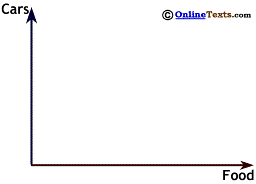

Copyright © 1995-2004 OnLineTexts.com, Inc. - All Rights Reserved
 Subsidies are payments by a country's government to domestic producers to encourage the export of a product. Subsidized products are usually products for which the country does not have a comparative advantage in production; otherwise, there would be no economic need for a subsidy.
Subsidies are payments by a country's government to domestic producers to encourage the export of a product. Subsidized products are usually products for which the country does not have a comparative advantage in production; otherwise, there would be no economic need for a subsidy.
A large enough subsidy would make it possible for auto makers in Country A to offer terms of trade to Country B that would induce them to import rather than manufacture their own Cars. A subsidy cannot reduce the cost of auto production for Country A, it can only compensate auto makers for exporting Cars at below cost. In Country B, the opportunity cost of a Car is 1/2 a Food unit; therefore, Country A would have to subsidize its auto makers enough so that they can sell Cars to Country B for no more than 1/2 a Food unit each. Thus, the minimum subsidy would be 1.5 Food units for each Car exported, since it costs 2 units of Food to produce a Car in Country A.


Copyright © 1995-2004 OnLineTexts.com, Inc. - All Rights Reserved